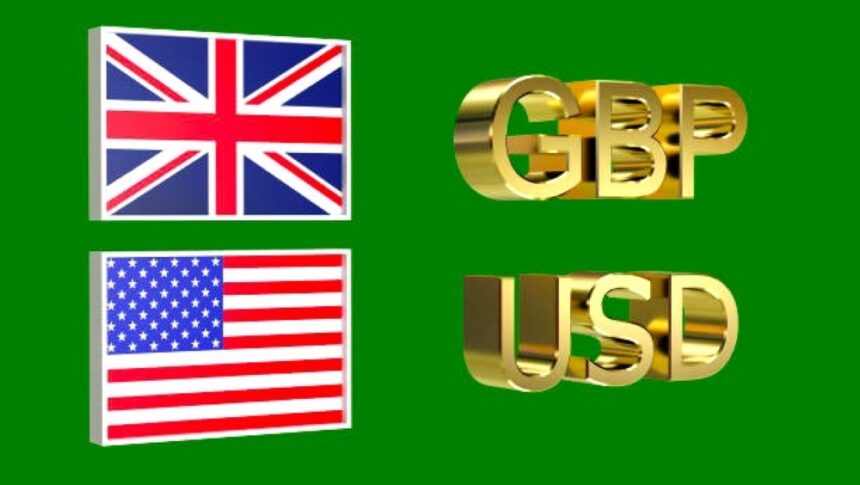The British Pound (GBP) is kicking off the week with strong momentum, capitalizing on broad-based US Dollar (USD) weakness and rising optimism surrounding upcoming economic events. The GBPUSD pair climbed above the 1.3500 level, setting its sights on the next key resistance around 1.3600.
Dollar on the Defensive
The US Dollar opened the week under pressure, with the US Dollar Index (DXY) slipping below the 98.00 mark, a level last seen in late July. This weakness reflects increasing speculation that the Federal Reserve (Fed) could deliver multiple interest rate cuts before year-end, particularly as recent economic data points to cooling inflation and signs of softening in the labor market.
Adding to the subdued tone, US markets are closed for Labor Day, leaving the greenback vulnerable to thin liquidity conditions and technical selling pressure.
Sterling Builds on Momentum
The Pound’s rebound from Friday’s dip underscores its resilience in the face of mixed domestic data. The move higher in GBPUSD is largely being driven by external factors, particularly the broad retreat in the dollar, but local market dynamics are also providing a layer of support.
Investors are growing increasingly comfortable with the view that the Bank of England (BoE) will maintain its current policy stance at its September 18 meeting, keeping rates steady even as markets price in 25 basis points of easing by March 2026.
Key UK Economic Signals
Recent UK data releases paint a mixed picture of the economy:
Housing Prices: Nationwide Housing Prices contracted by 0.1% in August, signaling persistent weakness in the property market.
Mortgage Approvals: Activity in the housing sector showed some improvement, with approvals rising to 65.35K in July.
M4 Money Supply: The BoE’s M4 measure expanded 0.1% month-on-month, suggesting modest liquidity growth.
Furthermore Manufacturing PMI: The final S&P Global Manufacturing PMI for August came in at 47.0, remaining below the 50.0 threshold that separates expansion from contraction.
While the data is far from robust, it hasn’t significantly shifted expectations for the BoE. Instead, markets remain focused on fiscal developments and upcoming testimony by BoE officials before the Treasury Committee later this week, which could provide further clues about the timing of any future policy adjustments.
Looking Ahead: US Data in Focus
Attention now shifts to the US economic calendar, where a heavy slate of labor market data is expected to guide market sentiment. Key releases this week include JOLTS job openings, ADP employment data, and Nonfarm Payrolls (NFP), all of which could influence the Fed’s policy trajectory.
Moreover Stronger-than-expected labor data could limit dollar losses, while any signs of labor market softening may accelerate expectations of aggressive Fed cuts, potentially driving GBPUSD closer to the 1.3600 handle.
Technical Outlook: Eyes on 1.3600
From a technical perspective, the GBPUSD pair has cleared a critical short-term barrier at 1.3500, opening the door to further upside. Immediate resistance lies near 1.3600, a level that, if breached, could pave the way for a test of 1.3650.
On the downside, support seen around 1.3450, followed by the 1.3400 psychological level, which could act as a buffer against deeper pullbacks.
Market Sentiment and Positioning
Speculative positioning data indicates that traders have been steadily rebuilding long positions on Sterling, reflecting growing confidence in the currency’s medium-term outlook. However, with volatility expected around key US data releases, short-term pullbacks remain a possibility.
For now, the market narrative favors GBP strength, underpinned by:
Dovish Fed expectations.
Stabilizing BoE policy signals.
Technical momentum supporting further gains.
Conclusion
The GBPUSD rally appears to have room to run as the US Dollar struggles to find support amid dovish Fed expectations and quiet holiday trading conditions. With the pair now firmly above 1.3500, traders are setting their sights on the 1.3600 target.
The week ahead promises increased volatility as US labor market data takes center stage, offering fresh cues on the Fed’s policy path. Meanwhile, in the UK, attention turns to fiscal discussions and BoE testimony, both of which could shape the Pound’s near-term direction.









